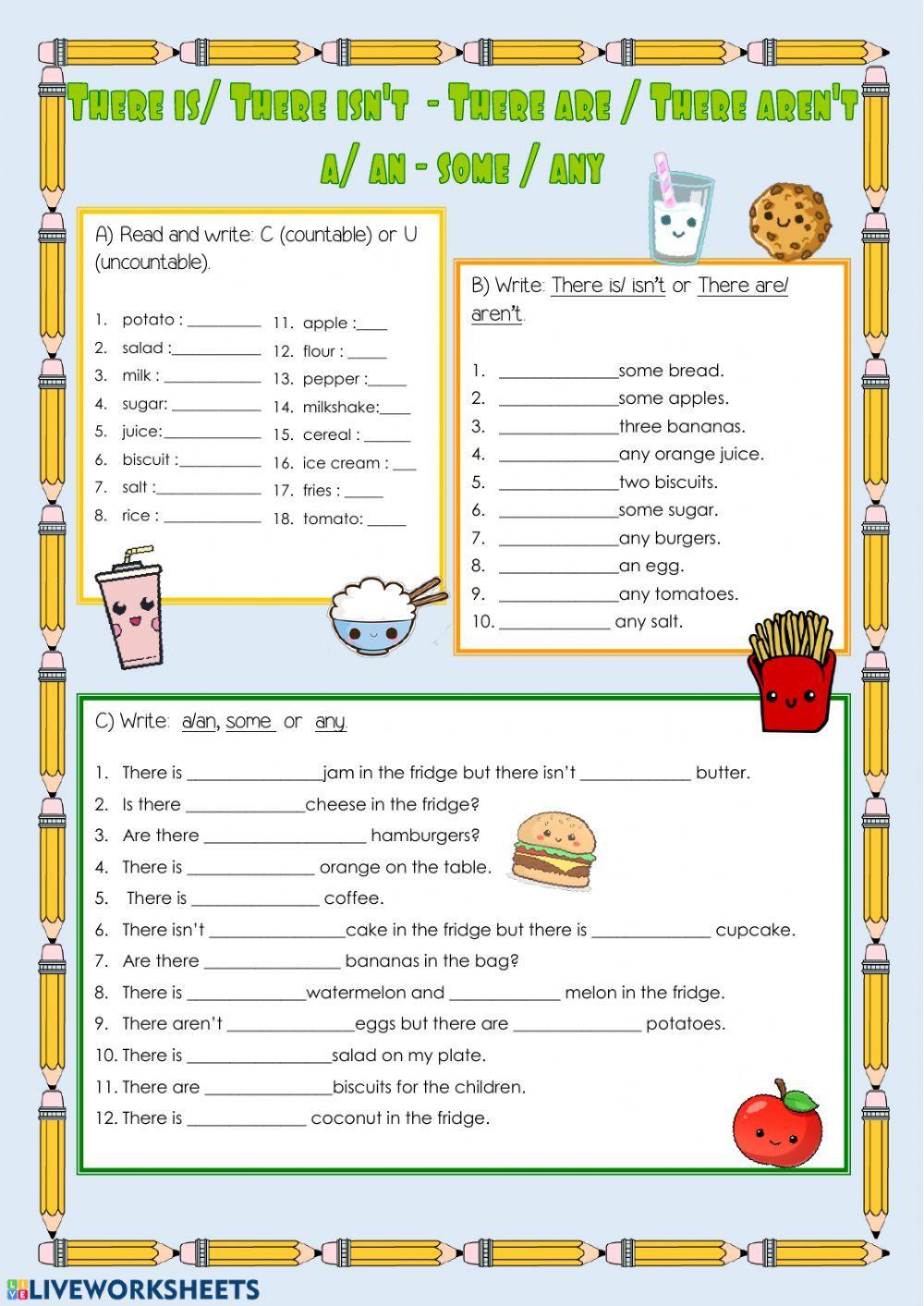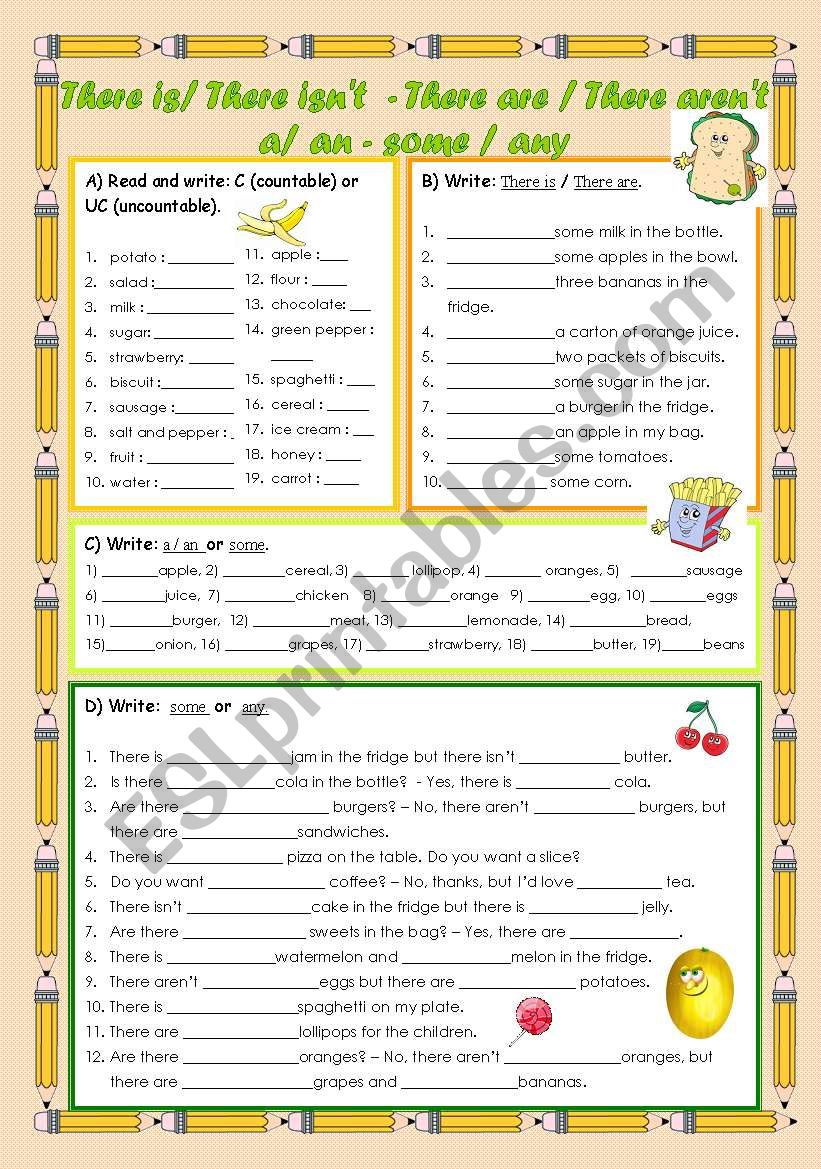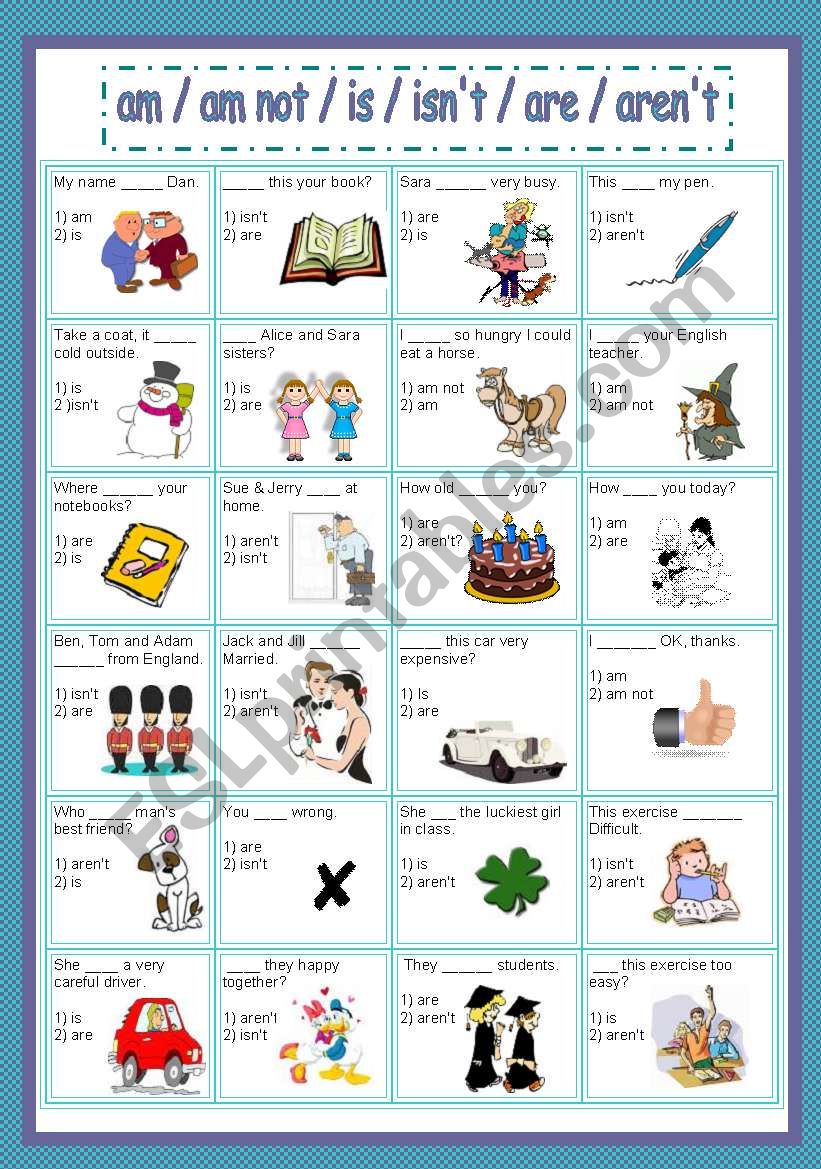Are you struggling to remember when to use isn’t, aren’t, and are? You’re not alone.
These small words can cause big confusion, especially if English isn’t your first language. But mastering them can boost your confidence and make your speaking and writing clearer. You’ll find simple exercises that will help you get these tricky words right every time.
Keep reading, and watch your skills improve fast!
Is, Isn’t, Aren’t Basics
Understanding the basics of “is,” “isn’t,” and “aren’t” helps build strong English skills. These words form the core of simple sentences. They show states, conditions, or existence. Knowing how to use them correctly is key to clear communication.
Forms And Functions
“Is” is the present form of the verb “to be” for singular subjects. It shows a state or fact. For example, “She is happy.”
“Isn’t” is the negative form of “is.” It means “is not.” For example, “He isn’t here.”
“Aren’t” is the negative form used with plural subjects and “you.” For example, “They aren’t ready.”
Each form matches the subject in number and meaning. They help describe people, things, or situations clearly.
Common Usage Patterns
Use “is” with singular nouns and pronouns like he, she, it.
Use “isn’t” to deny something about a singular subject.
“Aren’t” works with plural nouns and pronouns like we, you, they.
Questions often use these words. For example, “Is she here?” or “Aren’t they coming?”
These patterns appear in everyday speech and writing. They make sentences easy to understand.

Credit: www.liveworksheets.com
When To Use Is
Understanding when to use is helps build clear sentences. Is is a form of the verb “to be.” It connects the subject with a description or state. Using is correctly makes your English sound natural and correct.
Singular Subjects
Is is used with singular subjects. Singular means one person, place, or thing. For example, “The cat is sleepy.” Here, “cat” is one animal. The verb is matches this singular subject.
Use is after words like he, she, or it. Also use it with singular nouns like “dog,” “car,” or “book.”
Third-person Examples
In English, third person means talking about someone or something else. Use is with third-person singular subjects. Examples include “He is happy,” “She is a teacher,” and “It is cold today.”
These sentences show how is links the subject to a quality or fact. Remember, is fits only singular third-person subjects.
Using Isn’t Correctly
Using “isn’t” correctly helps make your sentences clear and natural. It is a short form of “is not.” You use “isn’t” to show something is not true or not happening right now. Understanding how to use it will improve your English speaking and writing.
Negative Contractions
“Isn’t” is a negative contraction made from “is” and “not.” You use it with singular subjects like “he,” “she,” or “it.” For example, “She isn’t happy” means “She is not happy.” This contraction makes sentences shorter and easier to say.
Do not use “isn’t” with plural subjects. Use “aren’t” instead. For example, say “They aren’t ready,” not “They isn’t ready.” This rule keeps your grammar correct.
Common Mistakes
One common mistake is mixing “isn’t” with plural subjects. For example, “The books isn’t new” is wrong. Say “The books aren’t new.”
Another mistake is using “isn’t” in questions without proper word order. For example, “Isn’t she coming?” is correct, not “She isn’t coming?”
Remember, “isn’t” always contracts “is not.” Using it with other verbs like “are” or “was” is incorrect.
Aren’t In Sentences
The word “aren’t” is a contraction of “are not.” It is used to show that something is not true or not happening. In sentences, “aren’t” often works with plural subjects. It helps make sentences shorter and easier to say. Understanding how to use “aren’t” correctly is important for clear communication.
Plural Subjects
“Aren’t” pairs with plural subjects. For example, “They aren’t here.” The subject “they” is plural, so “aren’t” fits perfectly. Use “aren’t” when talking about more than one person or thing. Singular subjects need “isn’t” instead. Remember, plural means two or more.
Questions And Negatives
“Aren’t” appears in questions and negative sentences. In questions, it checks if something is not true. For example, “Aren’t they coming?” This asks if they are not coming. In negative sentences, it denies or rejects something. Like, “The books aren’t on the table.” This means the books are not there. Using “aren’t” makes sentences short and clear.
Practice Exercises
Practice exercises help you use isn’t, aren’t, and is correctly. They build your confidence and improve your grammar skills. These exercises are simple and clear. You can practice anytime, anywhere. Let’s try some exercises to make learning fun and easy.
Fill-in-the-blanks
Fill in the blanks with isn’t or aren’t. This exercise helps you understand the right word to use. For example:
- He _____ at home today.
- The books _____ on the table.
- She _____ happy with the results.
- They _____ coming to the party.
Fill each sentence correctly. This practice improves your grammar fast.
Correct The Sentences
Look at the sentences below. Some are wrong. Find and fix the mistakes using isn’t or aren’t. For example:
- She aren’t ready for school.
- The dogs isn’t loud today.
- He aren’t my friend.
Write the correct sentence. This exercise trains your eye to spot errors. It makes you more confident in writing and speaking.

Credit: www.eslprintables.com
Tips For Mastery
Mastering isn’t, isn’t, are not, and aren’t helps you speak English clearly. These small words often cause confusion. Practicing them regularly builds your confidence and skills. Use simple methods to practice and improve fast.
Listening And Speaking Practice
Listen to short sentences using isn’t and aren’t. Repeat what you hear out loud. This helps your brain remember the correct form. Try watching videos or audio clips with clear speech. Speak with friends or teachers using these words. Practice makes these words feel natural and easy.
Writing And Review Techniques
Write sentences using isn’t, isn’t, are not, and aren’t daily. Check your work by reading it out loud. This helps find mistakes quickly. Use simple exercises like filling blanks or matching words. Review your sentences often to improve. Writing and reviewing help you use the words correctly every time.

Credit: www.eslprintables.com
Frequently Asked Questions
What Are The Differences Between Isn’t And Aren’t?
Isn’t is a contraction for “is not,” used with singular subjects. Aren’t is short for “are not,” used with plural subjects or “you. “
When Should I Use Isn’t Vs Aren’t?
Use isn’t for singular nouns or pronouns. Use aren’t for plural nouns, “you,” or compound subjects. Context determines the choice.
Can Isn’t And Aren’t Be Used Interchangeably?
No, isn’t and aren’t are not interchangeable. Their use depends on the subject’s number and person in the sentence.
Are There Common Mistakes With Isn’t And Aren’t?
Yes, many confuse isn’t and aren’t by mismatching singular and plural subjects. Correct usage improves clarity and grammar.
Conclusion
Is, isn’t, are, and aren’t exercises help you learn English better. They show how to use words in short, clear sentences. Practice often to feel confident speaking and writing. These exercises make grammar easier to understand. Keep trying, and mistakes will decrease.
Use what you learn every day. Small steps lead to big improvements. English becomes simpler with each practice session. Stay patient and enjoy the learning process.
